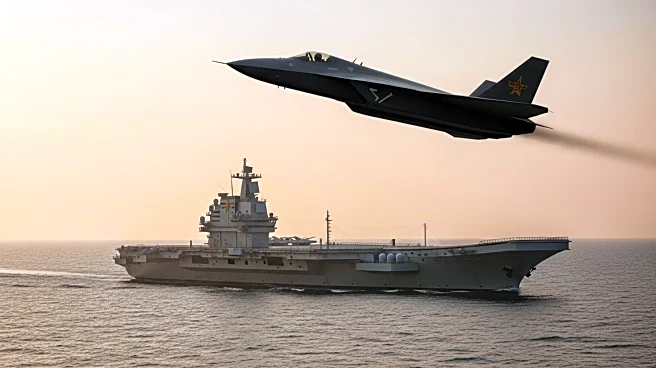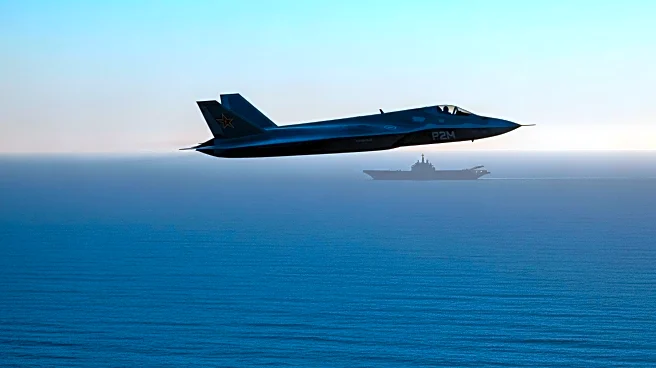What is the story about?
What's Happening?
The Chinese aircraft carrier Fujian, the most advanced vessel in China's naval fleet, has successfully launched and recovered next-generation naval aircraft, including the J-35 stealth fighter and KJ-600 early warning aircraft. These operations mark a significant milestone in China's naval modernization efforts. The Fujian, launched in 2022, is equipped with an electromagnetic catapult system, making it the only vessel outside the U.S. Navy with such technology. This capability allows for more substantial payloads and extended operational range. The carrier was recently observed sailing through the Taiwan Strait towards the South China Sea for testing, amid regional naval buildup activities involving India and Japan.
Why It's Important?
The successful tests on the Fujian highlight China's growing naval capabilities, which could shift the balance of power in the Asia-Pacific region. The ability to field advanced aircraft from carriers enhances China's power projection, potentially affecting U.S. and allied naval strategies. This development may lead to increased military presence and strategic competition in contested areas like the South China Sea. The advancements also underscore China's commitment to expanding its military reach, which could influence regional security dynamics and prompt responses from neighboring countries and the U.S.
What's Next?
As the Fujian nears commissioning, China is expected to further integrate its advanced carrier capabilities into its naval operations. This may lead to increased patrols and presence in strategic maritime regions. Regional powers, including the U.S., may respond by bolstering their own naval capabilities and forming strategic alliances to counterbalance China's growing influence. The ongoing carrier buildup in Asia suggests a potential arms race, with countries like India and Japan enhancing their naval fleets.
Beyond the Headlines
The deployment of the Fujian and its advanced capabilities could have long-term implications for international maritime law and freedom of navigation in contested waters. China's assertive naval strategy may challenge existing norms and lead to diplomatic tensions. Additionally, the technological advancements in carrier operations could spur innovation and competition in military technology globally.
AI Generated Content
Do you find this article useful?















